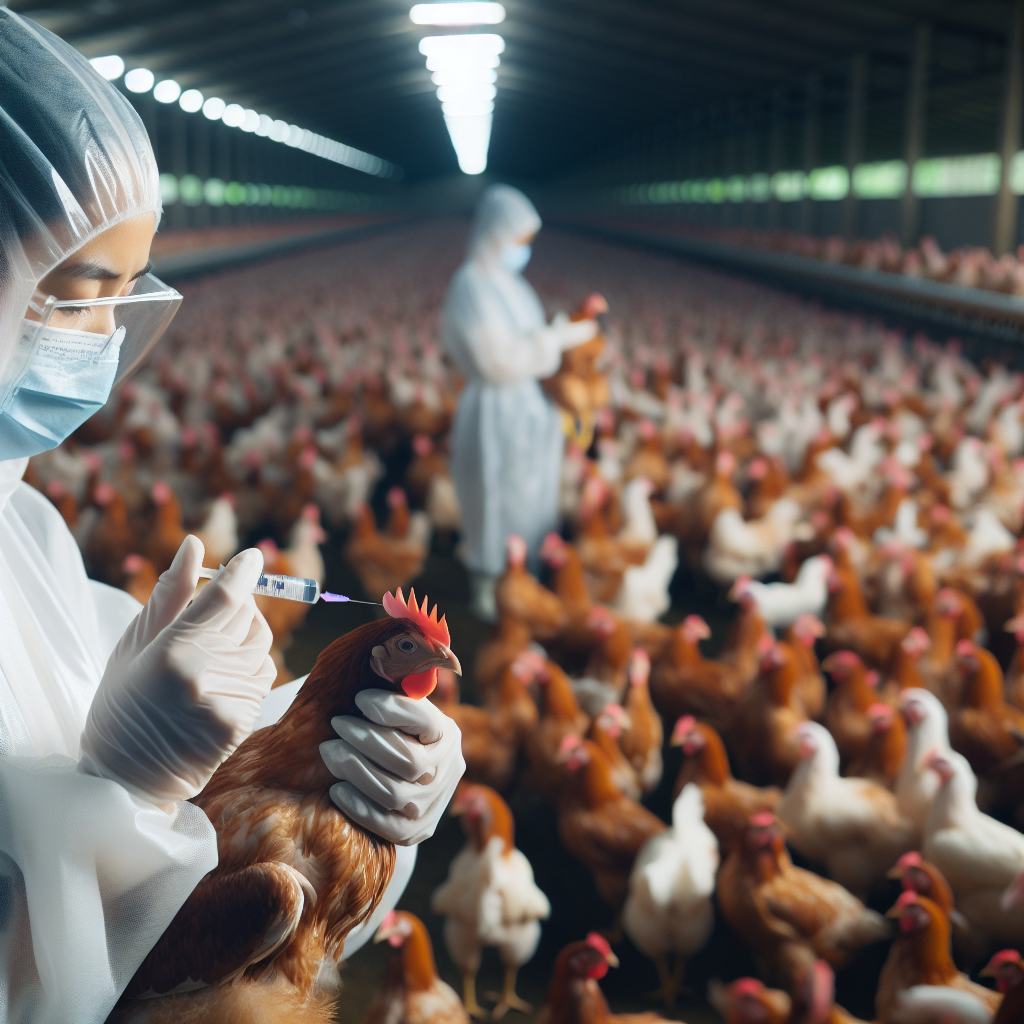Are you considering raising chickens in your backyard? If so, it’s important to understand the regional standards for chicken coops, housing, and space requirements. Knowing these regulations will not only ensure the well-being of your feathered friends but also keep you in compliance with local laws. Whether you’re a beginner or an experienced chicken keeper, this article will provide you with a concise overview of the regional standards you need to be aware of. From coop size to ventilation requirements, we’ve got you covered with all the information you need to create a safe and comfortable home for your chickens. So, let’s get started on your journey to becoming a responsible and successful chicken owner!
Regional Standards for Chicken Coops
When it comes to chicken coops, there are regional standards that vary across different parts of the world. These standards take into consideration factors such as climate, local regulations, and the needs of the chickens. In this article, we will explore the regional standards for chicken coops in North America, Europe, Australia, Asia, Africa, and South America.
Housing Requirements
Proper housing is essential for the well-being of chickens. It provides them with protection from predators, a comfortable environment, and helps to maintain good health. There are several key factors to consider when it comes to housing requirements for chicken coops.
Ventilation
Proper ventilation is crucial for a chicken coop. It helps to regulate the temperature, remove excess moisture and ammonia, and maintain good air quality. In North America, Europe, Australia, and Asia, chicken coops are typically equipped with windows or vents that can be opened and closed as needed. Adequate ventilation is important to prevent respiratory issues and the buildup of harmful gases.
Lighting
Lighting requirements for chicken coops vary depending on the region. In North America, Europe, Australia, and Asia, artificial lighting is often used to supplement natural daylight. This helps to provide consistent lighting conditions throughout the year and ensures that the chickens have enough light to lay eggs. In some regions, specific lighting schedules may be mandated by local regulations.
Insulation
Insulation is especially important in regions with extreme temperatures. In North America, Europe, and parts of Asia, where cold winters are common, chicken coops are often insulated to provide warmth and protect the chickens from frostbite. On the other hand, in hot and humid regions like parts of Australia and Africa, insulation can help to keep the coop cool and comfortable for the chickens.
Flooring
The flooring of a chicken coop plays a significant role in maintaining cleanliness and preventing the spread of diseases. In most regions, coops are equipped with easily cleanable materials such as concrete, wood, or plastic. Bedding materials like straw or wood shavings may also be used to provide a comfortable surface for the chickens and absorb moisture.
Nesting Boxes
Nesting boxes are an essential part of a chicken coop. They provide a safe and comfortable space for hens to lay their eggs. Regional standards for nesting boxes vary, but generally, they should be elevated off the ground, have soft bedding material, and be designed to prevent the eggs from rolling out. In many regions, one nesting box is recommended for every four to six hens.
Roosting Bars
Roosting bars are horizontal perches where chickens rest and sleep. They should be of appropriate size and height to accommodate the chickens comfortably. In most regions, roosting bars are placed at a height of around two feet from the floor. They should be made of smooth and rounded materials to minimize the risk of foot injuries.
Space Requirements
Providing enough space is crucial for the well-being of chickens. It allows them to move, exercise, and exhibit natural behaviors. The space requirements for chicken coops can vary depending on the region and the farming system.
Minimum Space Per Bird
Different regions have different minimum space requirements per bird. In North America, the United States typically recommends a minimum of 2-3 square feet of floor space per bird inside the coop. Canada follows a similar guideline, while Mexico might have variations based on local regulations. In Europe, the United Kingdom recommends a minimum of 1 square meter (10.8 square feet) per bird, while Germany, France, the Netherlands, Spain, and Italy have similar guidelines. Australia generally suggests a minimum of 0.1-0.15 square meters (1.1-1.6 square feet), depending on the state. In Asia, guidelines can vary, with China, India, Japan, South Korea, and Indonesia having their own standards. In Africa, Nigeria, Ethiopia, Egypt, South Africa, and Kenya may also have different minimum space requirements.
Outdoor Space
Outdoor space is important for chickens as it allows them to engage in natural behaviors such as scratching, pecking, and dust bathing. In many regions, providing outdoor access for chickens is encouraged. However, the availability and size of outdoor space can vary depending on local regulations and the specific needs of the chickens.
Run Space vs. Indoor Space
The allocation of space between indoor and outdoor areas in a chicken coop can differ depending on the farming system and regional guidelines. In intensive farming systems, where large numbers of chickens are housed in a confined space, the indoor area might occupy the majority of the coop. Conversely, in extensive farming systems, where chickens have access to a larger outdoor area, the indoor space might be smaller.
Intensive vs. Extensive Farming
The choice between intensive and extensive farming systems can also influence the space requirements for chicken coops. Intensive farming focuses on maximizing production in a limited space, often using high stocking densities and controlled environments. Extensive farming, on the other hand, allows chickens to have more space and freedom to roam. Each system has its own advantages and considerations when it comes to space requirements and the welfare of the chickens.
Regional Standards
Let’s take a closer look at the regional standards for chicken coops, housing, and space requirements in different parts of the world.
North America
In North America, the United States, Canada, and Mexico have their own guidelines for chicken coops and space requirements. The United States typically follows recommendations from the United States Department of Agriculture (USDA) and local regulations. Canada follows similar guidelines, with some variations based on the province. Mexico may have its own regulations and standards.
Europe
European countries such as the United Kingdom, Germany, France, the Netherlands, Spain, and Italy have their own regional standards for chicken coops. These standards are often influenced by national legislation and guidelines set by animal welfare organizations. The European Union also has regulations in place that cover minimum space requirements and other aspects of chicken housing.
Australia
In Australia, different states have their own guidelines for chicken coops and space requirements. New South Wales, Victoria, Queensland, South Australia, and Western Australia each have their own regulations, which may vary slightly. These guidelines are typically influenced by local climate conditions and animal welfare considerations.
Asia
Asian countries like China, India, Japan, South Korea, and Indonesia each have their own regional standards for chicken coops and space requirements. These guidelines are often influenced by local climate conditions, farming practices, and cultural factors. They may also be influenced by national regulations and guidelines.
Africa
In Africa, various countries have their own regional standards for chicken coops and space requirements. Nigeria, Ethiopia, Egypt, South Africa, and Kenya, among others, may have different guidelines based on local conditions, regulations, and cultural considerations. These guidelines aim to ensure the well-being of the chickens and comply with animal welfare standards.
South America
South American countries such as Brazil, Argentina, Colombia, Peru, and Chile each have their own regional standards for chicken coops and space requirements. These guidelines are often influenced by local regulations, climate conditions, and farming practices. The specific requirements may vary between countries, but the focus is always on providing a suitable and comfortable environment for the chickens.
Intensive vs. Extensive Farming
When it comes to space requirements, it’s important to consider the differences between intensive and extensive farming systems. Intensive farming focuses on maximizing production within a limited space, often using advanced technologies and controlled environments. On the other hand, extensive farming allows chickens more space to roam and exhibit natural behaviors. Let’s compare the two systems in terms of space requirements.
Comparison of Intensive and Extensive Systems
In intensive farming systems, space requirements are carefully calculated to optimize production and maximize efficiency. Chickens are typically housed in large numbers within a confined area, with limited space per bird. This system allows for easier management and control of environmental factors, but it can lead to concerns about animal welfare and the spread of diseases.
In extensive farming systems, chickens have more space to move around and engage in natural behaviors. They often have access to a larger outdoor area, allowing them to forage, scratch, and dust bathe. This system provides a more natural environment for the chickens, but it may require more land and can be less cost-effective.
Space Requirements in Intensive Farming
In intensive farming systems, the space requirements per bird are typically lower compared to extensive systems. This is because the focus is on maximizing production within a limited space. The specific space requirements can vary depending on the country and the farming methods used. However, it is important to ensure that the space provided allows for the well-being of the chickens and complies with animal welfare standards.
Space Requirements in Extensive Farming
In extensive farming systems, providing ample space for the chickens is a key consideration. Chickens should have enough space to move, exercise, and engage in natural behaviors. This often includes access to a larger outdoor area, where they can forage and explore. The specific space requirements can vary depending on the country, climate conditions, and the number of chickens per square meter.
In conclusion, regional standards for chicken coops, housing, and space requirements vary across different parts of the world. These standards take into consideration factors such as climate, local regulations, and the needs of the chickens. Proper ventilation, lighting, insulation, flooring, nesting boxes, and roosting bars are important housing requirements to meet. Meanwhile, the minimum space per bird, outdoor space, and the choice between intensive and extensive farming systems are crucial factors when determining the space requirements for chicken coops. It is essential to follow these regional standards to ensure the well-being and welfare of the chickens in each specific location.




